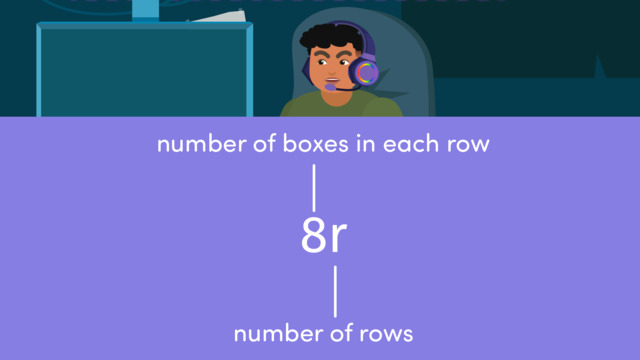How to Read Complex Expressions
Learning text on the topic How to Read Complex Expressions
Interpreting Algebraic Expressions
In this text, we're embarking on an adventure, we'll be tackling the world of algebraic expressions. Sharpen your pencils and put on your thinking caps because we're about to decode the language of algebra together!
Understanding Algebraic Expressions
An algebraic expression is a mathematical phrase that can include numbers, variables (like $x$ or $y$), and operation symbols. It's like a code that needs to be deciphered to understand the mathematical stories it tells.
These expressions can represent everything from simple quantities to complex relationships in equations. To help you become a code-cracking maths-whiz, let's go over some vocabulary.
| Term | Operation | Description |
|---|---|---|
| Sum | Addition | Indicates adding two or more numbers together. |
| Difference | Subtraction | Signals the result of subtracting one number from another. |
| Product | Multiplication | Means the result of multiplying two or more numbers. |
| Quotient | Division | Refers to the result of dividing one number by another. |
Interpreting Algebraic Expressions – Examples
Example 1: Imagine you are Aerial, an intrepid maths explorer and problem solver. Picture yourself in Aerial's boots, facing a puzzling expression: $3n + 6$ . The twist here is not to hastily read it from left to right. Instead, remember the golden rule: multiplication and division come before addition and subtraction, unless brackets say otherwise.
Example 2: Aerial comes across another riddle: $3 - n \div 5$. She might misread it as "three minus $n$" first and then divide by five. Remember, prioritise division over subtraction. Writing division as a fraction helps in understanding the correct order.
Example 3: Our hero is faced with one last challenge: a verbal conundrum, "The quantity $x$ plus $8$, raised to the $4$th power." The term "quantity" clues us in that $x + 8$ is a group that we handle before applying the power of $4$.
Interpreting Algebraic Expressions – Practice
Reading and Interpreting Algebraic Expressions – Summary
Key Learnings from this Text:
- Algebraic expressions are codes made up of numbers, variables, and operations.
- Vocabulary like "sum," "difference," "product," and "quotient" gives clues on how to read expressions.
- Remember the order of operations: Multiplication and division come before addition and subtraction, with brackets indicating priority.
- Translating words into algebraic expressions is a critical skill for solving mathematical problems.
Take the lessons from Aerial's story and apply them to your maths adventures. The more you practise, the more confident you'll become in reading and interpreting these algebraic puzzles. And remember, this is just the beginning of your journey to becoming a maths superhero!
Dare to explore more? Check out our interactive practice problems, videos, and worksheets on our educational platform. Your maths hero journey continues!
 Do you want to learn faster and more easily?
Do you want to learn faster and more easily?















